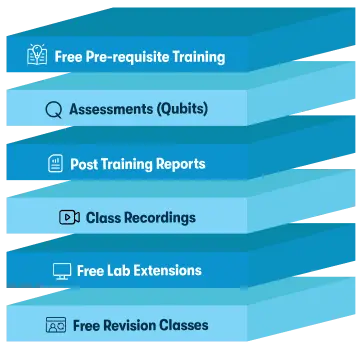We're open through the holidays to support your upskilling goals — Which training do you want to book?
We're open through the holidays to support your upskilling goals — Which training do you want to book?
Unable to find what you're searching for?
We're here to help you find it


Intermediate Microsoft Excel Course Overview
In today's professional landscape, dominated by discussions of AI and machine learning, an empirical analysis reveals a surprising truth: a foundational application from the microsoft corporation, Microsoft Excel, remains an unparalleled necessity. As a core component of the Microsoft Office suite and Microsoft 365, its basic utility is widely understood. However, our hypothesis is that the true professional leverage—the kind that amplifies productivity and accelerates career trajectories—is unlocked by progressing to an intermediate skill level. At Koenig Solutions, our Intermediate Microsoft Excel course is scientifically designed to facilitate this crucial transition, elevating your proficiency from foundational knowledge to formidable expertise. The data supports this; even in December 2025, an analysis of tech job postings shows Excel is still one of the most in-demand skills, cited far more often than specialized programming languages.
The transition from a beginner to an intermediate user of the MS Excel program is more than a simple upgrade; it is a verifiable catalyst for professional advancement. In the modern data-centric economy, employers are no longer satisfied with mere familiarity with the Microsoft Excel application; they actively seek professionals who can systematically manage, analyze, and interpret data to inform strategic decisions. The empirical evidence is clear: an estimated 83% of clerical and administrative positions list Excel skills as a prerequisite [7].
This advancement in skill correlates directly with tangible career benefits. This Excel advanced beginner training makes you a more efficient, valuable, and competitive asset. Furthermore, there is a strong positive correlation between proficiency and compensation. Roles that require superior Excel capabilities can command salaries up to 20% higher than those needing only basic skills.
Successfully delivered 18 sessions for over 255 professionals
Purchase This Course
USD
View Fees Breakdown
| Course Fee | 850 |
|
Total Fees |
850 (USD) |
USD
View Fees Breakdown
| Course Fee | 650 |
|
Total Fees |
650 (USD) |
USD
View Fees Breakdown
| Flexi Video | 16,449 |
| Official E-coursebook | |
| Exam Voucher (optional) | |
| Hands-On-Labs2 | 4,159 |
| + GST 18% | 4,259 |
|
Total Fees (without exam & Labs) |
22,359 (INR) |
|
Total Fees (with Labs) |
28,359 (INR) |
Select Time
Select Date
| Day | Time |
|---|---|
|
to
|
to |
♱ Excluding VAT/GST
You can request classroom training in any city on any date by Requesting More Information
Inclusions in Koenig's Learning Stack may vary as per policies of OEMs
Scroll to view more course dates
You can request classroom training in any city on any date by Requesting More Information
♱ Excluding VAT/GST
*Inclusions in Koenig's Learning Stack may vary as per policies of OEMs
Suggestion submitted successfully.
Koenig Learning Stack
Inclusions in Koenig's Learning Stack may vary as per policies of OEMs



